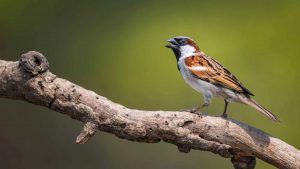
35 interesting facts about magpies
- 👁️ 1419
Magpies are one of the most recognizable and intriguing bird species found across the globe, known for their striking black and white plumage and long tails. These intelligent birds belong to the family Corvidae, which also includes crows, ravens, and jays. Magpies have captivated human imagination for centuries, featuring prominently in folklore, mythology, and popular culture, often symbolizing luck, curiosity, and creativity. They exhibit fascinating behaviors, from problem-solving skills to complex social interactions, making them a subject of interest for both scientists and bird enthusiasts. Let’s explore some interesting and informative facts about magpies.
- There are several species of magpies, with the most widely recognized being the European magpie (Pica pica).
- Magpies are found in a variety of habitats, including forests, grasslands, and urban areas.
- They are known for their striking iridescent feathers, which can appear to shimmer in blue and green hues.
- Magpies are omnivorous, feeding on a diet that includes insects, fruits, seeds, and occasionally small mammals or birds.
- They have been observed using tools, such as using sticks to retrieve food from tight spaces.
- Magpies are one of the few non-mammalian species to recognize themselves in a mirror, a test of self-awareness.
- In some cultures, magpies are considered to be birds of good luck, while in others, they are associated with bad omens.
- The collective noun for a group of magpies is a “tiding,” “gulder,” or “murder.”
- They are highly vocal birds, capable of producing a wide range of sounds, including mimicking human speech.
- The Australian magpie (Cracticus tibicen) is not closely related to the European magpie but was named for its similar black and white plumage.
- Magpies build large, dome-shaped nests, which are often constructed with sticks and mud.
- The breeding season for magpies can lead to aggressive behavior, as they protect their nests from perceived threats, including humans.
- They are known to collect shiny objects, although the extent to which this is true has been debated by scientists.
- Magpies form monogamous pairs, with both males and females participating in raising their young.
- In Chinese culture, the magpie is a symbol of happiness and good fortune.
- The Korean magpie (Pica sericea) is considered the national bird of Korea.
- Magpies have a relatively long lifespan for birds, with some living up to 20 years in the wild.
- Their intelligence is demonstrated through complex social behaviors, including mourning rituals for dead companions.
- In European folklore, the number of magpies seen is often interpreted as a predictor of future events.
- Magpies are capable of passing the “marshmallow test,” an experiment that measures self-control and future planning.
- They play a crucial role in their ecosystems as both predators and scavengers.
- Some magpie species, like the black-billed magpie (Pica hudsonia), are migratory, while others remain in the same area year-round.
- Magpies have been subjects of numerous studies in animal cognition, showcasing their problem-solving abilities.
- The tail of a magpie can make up more than half of its overall length.
- Their nests sometimes include a roof and can have two entrances.
- Magpies are susceptible to West Nile virus, which has significantly impacted their populations in some areas.
- The Eurasian magpie is the only bird species known to have episodic-like memory, a complex cognitive behavior.
- In some parts of the world, magpies are kept as pets due to their sociable nature and mimicking abilities.
- The pied magpie (Grallina cyanoleuca) of Australia builds mud nests, earning them the nickname “mudlark.”
- Their diet can also include carrion, making them important in the cleanup of dead animals from their environments.
- The rhyme “One for sorrow, two for joy” is a traditional children’s nursery rhyme in the UK related to magpies.
- Magpies have been observed engaging in playful behavior, such as sliding down rooftops.
- Genetic studies show that magpies in the genus Pica are more closely related to Eurasian crows than to other magpie species.
- In Tibetan Buddhism, the magpie is seen as a bird of joy and is often welcomed.
- Urbanization has led to increased populations of some magpie species, as they adapt well to living in close proximity to humans.
Magpies are a fascinating blend of beauty, brains, and mystery, embodying traits that both endear and perplex humans. Their widespread presence in folklore and mythology speaks to their significant impact on human culture, while their behaviors and intelligence continue to be subjects of scientific inquiry. As we learn more about magpies, we uncover the complexities of their social structures, cognitive abilities, and the role they play in our ecosystems. Their adaptability and resilience remind us of the intricate connections between wildlife and human society, and the importance of coexisting with the natural world.











